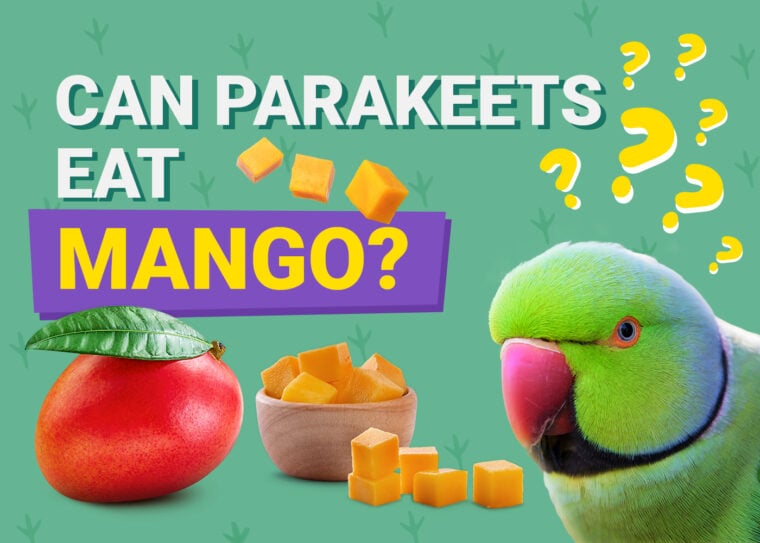
Parakeets are wonderful pets that eat several different fruits, vegetables, and seeds, as well as commercial pellet food. They enjoy variety in flavor and color, making it both fun and challenging to create meals for your pet bird each day. One of the fruits readers regularly ask about is mango, as many people are unsure if parakeets can eat it.
The answer is yes! Parakeets can eat mango, but there are some things to consider before making it a part of their regular diet. Keep reading while we look at the safety and possible hazards of feeding this food to your pet, and we’ll also discuss the best way to serve it so you can offer your pet a healthy and balanced diet.
The term parakeet isn’t a taxonomical reference to any genus or family of parrots; the parrots sometimes referred to as parakeets span multiple genera.
Examples of parrots generally termed as parakeets include budgies, cockatiels, ring-necked parrots, and nose-ringed parrots.
Positive Aspects of Mango for Parakeets

Negative Aspects of Mango for Parakeets

Pesticides
As with any fruit or vegetable, one of the biggest dangers to your pet comes from residual pesticides that can remain even after you wash the fruit. Luckily, the mango is one of the fruits that are low in pesticides, and it’s even better if you remove the skin before serving it.
However, it’s still a good idea to wash your mangos thoroughly before letting your pet eat them to minimize risk. Go for organic if possible.
Sugar
Another thing that mangos have in common with other fruits is that they contain a lot of sugar. A single cup can contain more than 24 grams of sugar. Too much sugar can cause your pet to gain weight, and it can lead to other health problems as well. Most experts recommend limiting fruits to a small portion each day to minimize risk while still providing your pet with variety.
How Should I Feed Mango to My Parakeet?

How Much Mango Should I Give My Parakeet?
As we mentioned earlier, mango contains a lot of sugar that can lead to diabetes and other health problems for your pet. So, you will need to limit portion size. We recommend feeding mango to your bird that’s about equal in size to one or two grapes.
How Often Can I Feed Mango to My Parakeet?

While mango contains plenty of helpful nutrients, your parakeet likes plenty of variety in both taste and color. Most experts recommend feeding your pet several different fruits to help keep your bird happy and healthy. Since you can only serve tiny portions of these fruits, you will likely only be able to provide your pet with mango once or twice per week as a tiny part of a much larger selection of fruit.
Summary
As you can see, the mango is a healthy fruit that you can provide your parakeet each week as long as you pay attention to your portion size, so you’re not giving it too much sugar. It’s quite popular with our pets because of its bright color, soft texture, and sweet taste. We like it because it’s low in pesticides and easy to prepare. It’s also easy to find in most grocery stores.
We hope you have enjoyed this short guide, and it has helped answer your questions!
- See also: Can Parakeets Eat Watermelon?
Featured Image Credit: Ajeesh_7, Shutterstock









